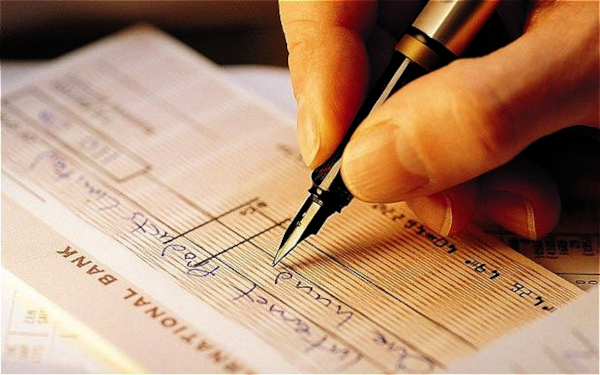Counterfeiting a banknote containing multiple security features is rather difficult. But counterfeiting a bank cheque is not that tough because of a lack of security features. To fix this problem a group of researchers from the Council of Scientific and Industrial Research- National Physical Laboratory (CSIR-NPL) has developed a new security ink for bank cheques that is difficult to replicate.
Banknotes contain a security pigment that appears white under ambient light, and red under UV light and after removal of UV illumination, in green. That is the pigment used for this security feature has both phosphorescence (shining in a colour under a light) and fluorescence (radiating light in a particular colour after removal from a light source). The MICR code in the cheque is printed with a special ink that has ferromagnetic properties; however, they do not have the light exciting security features like a currency note. MICR means Magnetic Ink Character Recognition, which makes the cheques machine-readable.
Banknotes contain a security pigment that appears white under ambient light, and red under UV light and after removal of UV illumination, in green. That is the pigment used for this security feature has both phosphorescence (shining in a colour under a light) and fluorescence (radiating light in a particular colour after removal from a light source). The MICR code in the cheque is printed with a special ink that has ferromagnetic properties; however, they do not have the light exciting security features like a currency note. MICR means Magnetic Ink Character Recognition, which makes the cheques machine-readable.
The researchers have formulated a high-security anti-counterfeiting ink by synthesizing a pigment having phosphorescence, luminescent as well as magnetic properties in it. They synthesized a compound pigment that emits intense orange (580 nm wavelength) and red (660 nm wavelength) when put under ultraviolet (UV) light of 351 and 980 nm wavelength, respectively. The ink also reacts under a magnetic field making it machine-readable like the cheques used today.
The new ink developed by the NPL researchers, is more secure as they have a multi-stage excitable luminescent pigment-based pattern that emits two different encrypted wavelengths when excited with two distinct wavelengths. The current inks, used even in currency notes shine only in one colour under say UV light. However, this ink shines at two colours when excited with two different wavelengths of light. This technology of single unit emitting dual-colour when exposed to different wavelengths is not easy to duplicate. Thus, with this pigment ink, the cheques will become even more difficult to counterfeit.
The research team comprised Dr Bipin Kumar Gupta, Dr Kanika, Dr Garima Kedawat and Dr Satbir Singh. The research findings have been published in the journal Advanced Material Technologies.
You may also like
-
New Heat-Based Approach To Cancer Treatment Can Reduce Chemotherapy Doses
-
Scientists Take A Major Step Towards Unification Of Classical & Quantum Gravity
-
India Graphene Engineering and Innovation Centre (IGEIC) Under the Vision of Viksit Bharat@2047 Launched
-
New High-Performance Gas Sensor can Monitor Low Level Nitrogen Oxides Pollution
-
Antidepressant Drug can be Repurposed for Treating Breast Cancer
